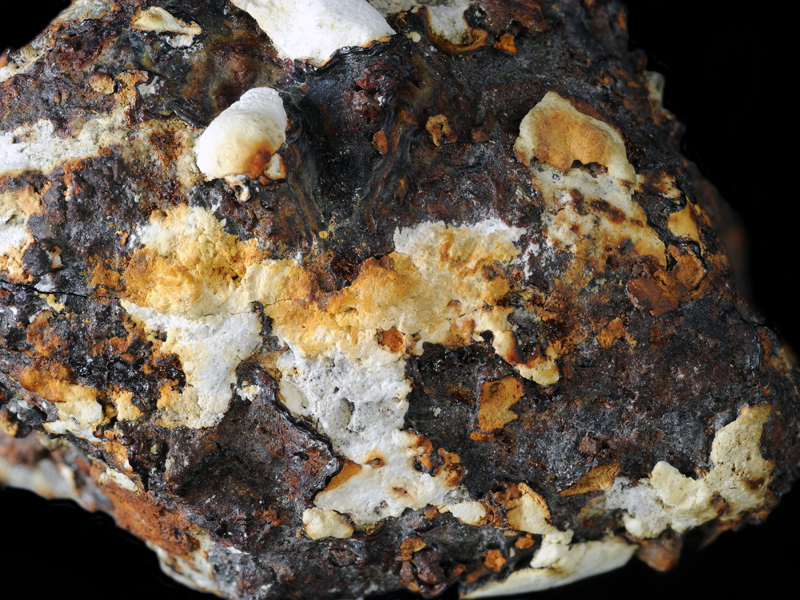
Fact sheet
The Danebury meteorite is an H5 ordinary chondrite weighing 30g that was first recognized as a meteorite in 1989 during characterization of metalworking debris from Danebury, an Iron Age hillfort, in Hampshire, England. Its arrival on Earth has been dated as 2350±120 yr BP, making it contemporary with the period of maximum human activity at the recovery site. Despite its considerable terrestrial residence age, the interior of the specimen is remarkably fresh with a weathering index of W1/2. There is, however, no evidence of human intervention in its preservation. Its near-pristine state is explained in terms of its serendipitous burial during the back-fill of a pit dug into chalk by prehistoric people for the storage of grain. This chance discovery has interesting ramifications for the survival of meteorites in areas having a high pH because of a natural lime content arising as a result of the local geology.
The meteorite contains fairly abundant chondrules. Porphyritic olivine types predominate, but well-developed barred-olivine, radial pyroxene, and crypto-crystalline chondrules are also present. In reflected light large regions of iron-nickel metal and sulphide are clearly visible. The sample is cross-cut by veinlets filled with secondary iron oxides.
The Danebury meteorite is now on public display at the Museum of the Iron Age, in Andover.
See also:
Pillinger et al. (2014) The Danebury Iron Age meteorite—An H5 ordinary chondrite; from Hampshire, England.Meteoritics & Planetary Science, 49, 946-957. (PDF)
http://www.lpi.usra.edu/meteor/metbull.php?code=5512
This Collection consists of meteorites that have fallen in Great Britain and Ireland and which are now preserved in museum collections. We have also included samples of the two known meteorite impact deposits in the UK.
The Natural History Museum in London offers more information about meteorites and meteorite categories; there is more information about its meteorite collections here.



















